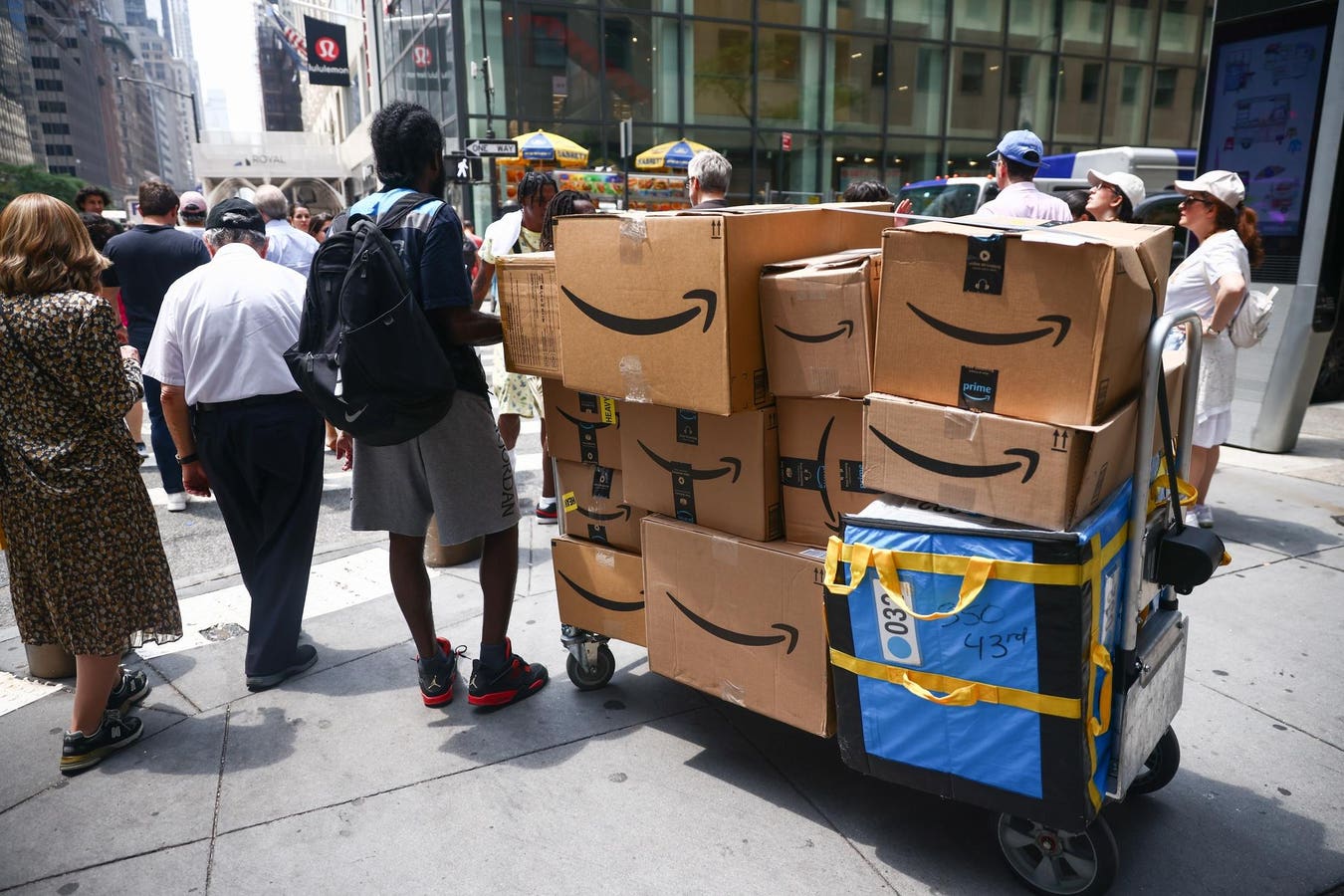Topline
The summer online Prime Day sales event, hosted by Amazon from July 8 to July 11 and which sparks a wave of competing online promotions, generated $24.1 billion in U.S. online sales – a 30.3% year-over-year increase that topped projections of $23.8 billion, according to Adobe.
Prime packages are being delivered in Manhattan, New York City, United States of America on July … More
Key Facts
This year’s Prime Day summer event got off to a slow start, with Tuesday, July 8 online sales totaling $7.9 billion, representing only a 9.9% increase over last year, but sales quickly picked up over day two through four.
With new tariffs looming, consumers took advantage of deep discounts to shop ahead of price increases with especially strong online sales reported in office supplies (up 105%), electronics (+95%), books (+81%), tools and home improvement (+76%), home and garden (+58%) and baby/toddler (+55%).
Kid’s apparel, back to school supplies and dorm room essentials moved quickly, as did a wide range of typically higher-ticket items made more appealing by deep discounts, such as home appliances, furniture, computers, smartphone accessories, exercise equipment, power tools and small kitchen appliances.
Mobile shopping accounted for just over half of Prime Day sales, making it the dominant transaction channel over desktop shopping.
The industry’s online Prime Day take added up to two “Black Fridays,” which totaled $10.8 billion in online spending last year, and according to Adobe, “sets a new benchmark for the summer shopping season.”
Key Background
Amazon launched Prime Day in 2015 as a single July day sales event that grew to two days in 2019 and, for the first time this year, it was extended to four days. Not to be outdone, retailers far and wide have leveled up with competing events, such as Walmart Deal Days and Target Circle Week. In effect, the Prime Day sales event has become a virtual discounters’ arms race, with retailers locked in fierce competition to attract consumers’ attention and spending. Adobe observed that many of this year’s discounts were better than last year. For example, apparel was discounted an average of 24% from list price compared to 20% last year, toys were off 19% (vs. 15%), and appliances discounted 17% (vs. 14%).
Crucial Quote
“The big story this year? The sheer excessiveness of it all. The unprecedented 4-day length, overlapping retailer events, massive deal depths, and deals dominating search results,” said Tristan Williams, Envision Horizons. “Prime Day has evolved from a shopping event into a shopping season.”
What To Watch For
Sales promotions are a double-edged sword for retailers: they can drive increased traffic and sales, but at the cost of thinner margins and lower profits. They can also condition shoppers to wait for the next sale, creating a vicious cycle of delayed purchases and margin pressure.
Further Reading
US Online Spending Surges $24.1 Billion As Steep Discounts Boost Sales (Reuters, 7/12/2025)



